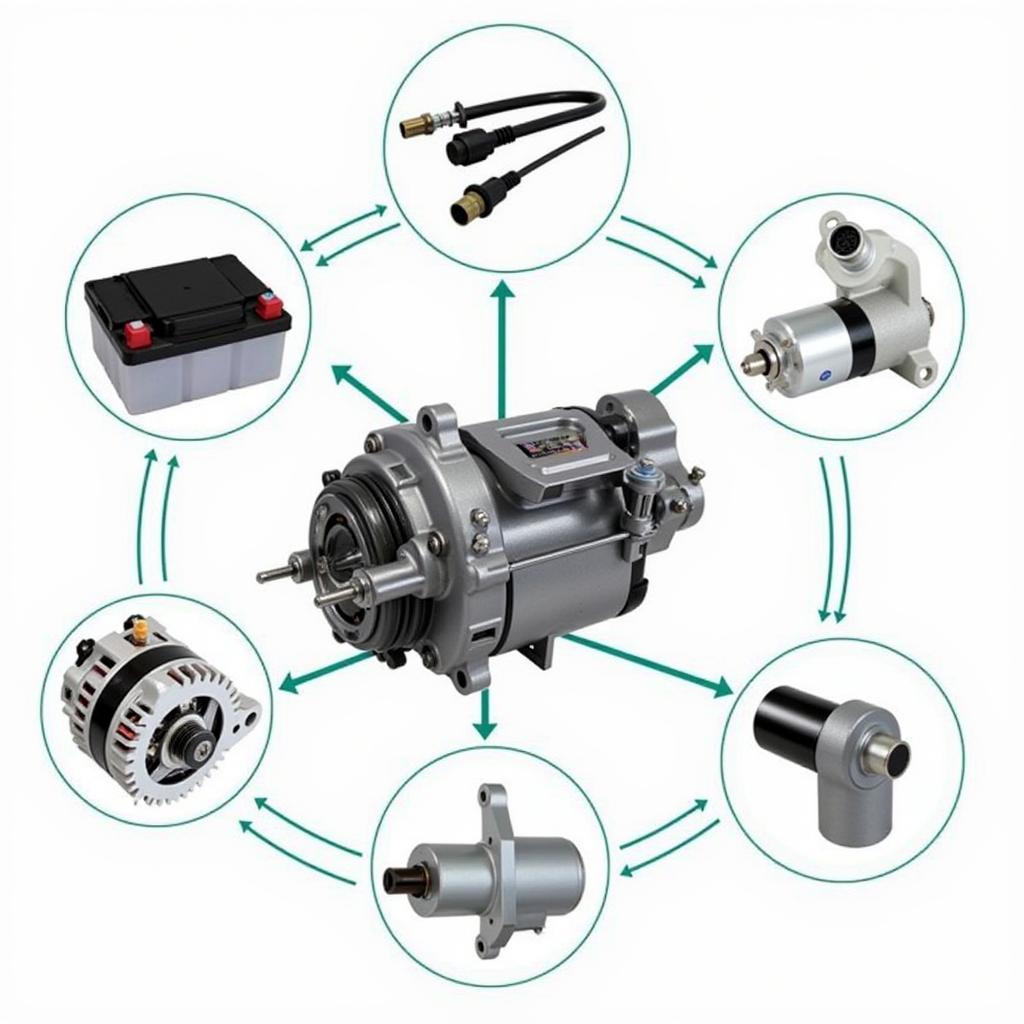The ASEAN Economic Community (AEC) and its key component, the AEC Comprehensive Legal Arrangement (CLA), are crucial for fostering economic integration within Southeast Asia. This article explores the AEC CLA pillars, their significance, and impact on the region.
What is the AEC CLA?
The AEC CLA is a legally binding agreement that provides the legal framework for the establishment and functioning of the AEC. It aims to create a single market and production base, enhance the free flow of goods, services, investment, and skilled labor, and strengthen institutional mechanisms within ASEAN. It essentially sets the ground rules for economic cooperation and integration.
The Four Pillars of the AEC CLA
The AEC CLA is built upon four fundamental pillars, each playing a vital role in realizing the AEC’s vision:
- Single Market and Production Base: This pillar focuses on creating a unified market within ASEAN, facilitating the free flow of goods, services, investment, and capital. It aims to reduce non-tariff barriers and simplify customs procedures.
- Competitive Economic Region: This pillar emphasizes the importance of fostering a competitive environment within ASEAN. It promotes fair competition, consumer protection, and intellectual property rights, ensuring a level playing field for businesses.
- Equitable Economic Development: Recognizing the diverse levels of development within ASEAN, this pillar aims to reduce development gaps and promote inclusive growth. It focuses on initiatives that support less developed member states and encourages regional economic integration.
- Integration into the Global Economy: This pillar aims to enhance ASEAN’s position as a global economic player. It promotes regional economic integration through agreements with external partners and participation in global economic forums.
The Significance of the AEC CLA
The AEC CLA holds immense significance for the ASEAN region. It has helped to:
- Boost intra-ASEAN trade: The reduction of tariffs and non-tariff barriers has led to increased trade within the region.
- Attract foreign investment: The creation of a more stable and predictable legal framework has attracted foreign investors to ASEAN.
- Facilitate the movement of skilled labor: The mutual recognition agreements for professionals have facilitated the movement of skilled labor within ASEAN.
- Promote regional economic integration: The CLA provides a platform for ASEAN countries to work together on economic issues and coordinate their policies.
Challenges and Opportunities
While the AEC CLA has brought about significant progress, challenges remain:
- Non-Tariff Barriers: Although tariffs have been reduced, non-tariff barriers continue to hinder trade within ASEAN.
- Implementation Gaps: The effective implementation of the CLA remains a challenge for some member states.
- Development Gaps: Significant disparities in development levels within ASEAN continue to persist.
 Challenges and Opportunities for the ASEAN Economic Community
Challenges and Opportunities for the ASEAN Economic Community
Despite these challenges, the AEC CLA presents numerous opportunities:
- Growth in e-commerce: The rise of e-commerce presents opportunities for businesses to reach new markets within ASEAN.
- Development of regional value chains: The AEC can facilitate the development of regional value chains, enhancing competitiveness and attracting further investment.
- Greater integration with the global economy: The AEC can leverage its collective strength to negotiate favorable trade agreements with external partners.
How Does the AEC CLA Impact Businesses?
The AEC CLA provides businesses with a range of benefits:
- Access to a larger market: Businesses can access a market of over 600 million consumers.
- Reduced trade costs: The reduction of tariffs and non-tariff barriers has lowered the cost of doing business within ASEAN.
- Greater mobility of skilled labor: Businesses can more easily hire skilled workers from other ASEAN countries.
- Increased investment opportunities: The CLA has created a more attractive environment for both domestic and foreign investment.
Conclusion
The ASEAN Economic Community and its Comprehensive Legal Arrangement (AEC CLA) are instrumental in fostering economic integration and growth within Southeast Asia. The four pillars of the CLA provide a framework for creating a single market and production base, enhancing competitiveness, promoting equitable development, and integrating the region into the global economy. While challenges remain, the AEC CLA presents significant opportunities for businesses and individuals within ASEAN.
FAQ
- What is the main goal of the AEC? To create a single market and production base within ASEAN.
- What are the four pillars of the AEC CLA? Single Market and Production Base, Competitive Economic Region, Equitable Economic Development, and Integration into the Global Economy.
- How does the AEC CLA benefit businesses? It provides access to a larger market, reduces trade costs, facilitates the movement of skilled labor, and creates more investment opportunities.
- What are some of the challenges facing the AEC? Non-tariff barriers, implementation gaps, and development disparities.
- How can I learn more about the AEC CLA? Visit the official ASEAN website for comprehensive information and resources.
- What is the role of the CLA in the AEC? It provides the legal framework for the AEC’s functioning.
- What are some examples of non-tariff barriers? Technical regulations, sanitary and phytosanitary measures, and customs procedures.
When you need support, please contact us at Phone Number: 0369020373, Email: [email protected] or visit our address: Thôn Ngọc Liễn, Hiệp Hòa, Bắc Giang, Việt Nam. We have a 24/7 customer support team.


